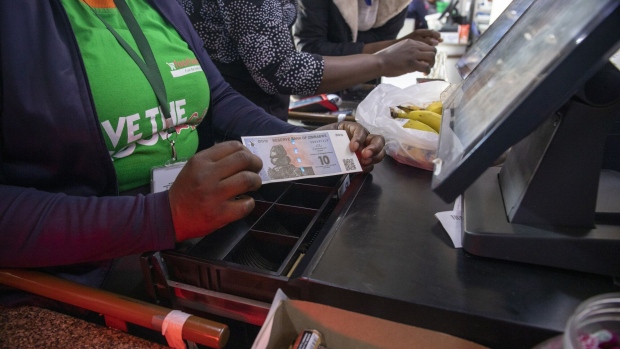Zimbabwe’s new Currency, the ZiG, has brought with it deflation
Zimbabwe, which has become synonymous with runaway inflation, is now contending with deflation following the introduction of its new currency.
In its first inflation reading computed using ZiG, launched on April 5, consumer prices fell 2.4% in May from a month earlier, the Zimbabwe National Statistics Agency said in an online briefing.
ZiG, short for Zimbabwe Gold, is the nation’s sixth attempt at a stable local currency in 15 years. It replaced the Zimbabwean dollar, which had crashed several times since it was reintroduced in 2019, fanning inflation.
The Zimbabwean dollar had lost 80% of its value against the greenback this year before it was abandoned on April 5.
That made day-to-day transactions increasingly hard to comprehend, as more zeros had to be added to the prices of goods in supermarkets and restaurants to keep track of the domestic currency’s weakness.
In contrast, the ZiG has advanced 1.9% against the dollar since it started trading on April 8.
Monetary authorities forecast monthly inflation to end the year at between 2% and 5%.
Zimbabwe’s statistics agency also provided data for blended inflation adopted in September, which uses the local currency and US dollars, its main transacting currency.
Because of the currency changes last month, the agency “is now only computing” the month-on-month blended inflation rate, according to Thomas Chikadaya, the manager for price statistics.
Under the blended inflation measure, consumer prices fell 0.6% in May from a month earlier.








